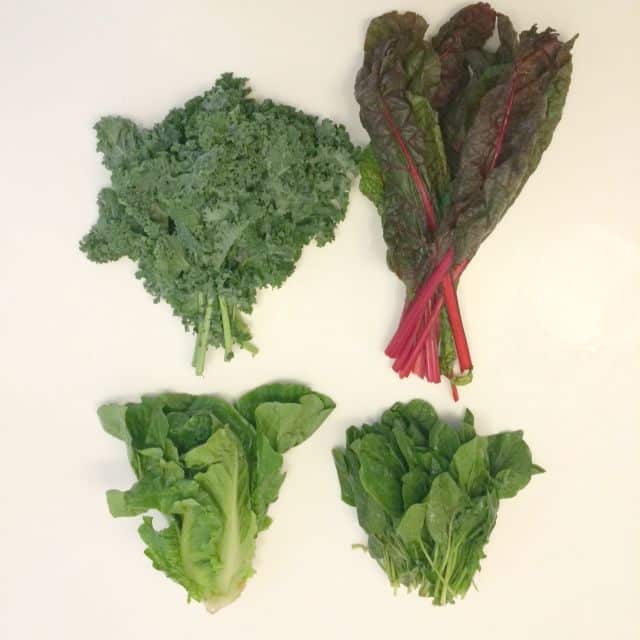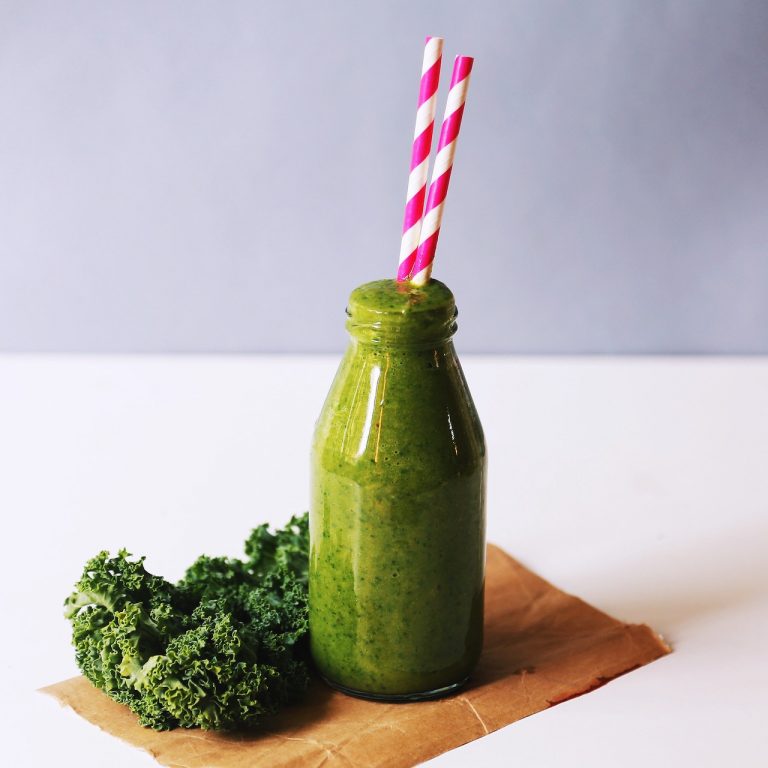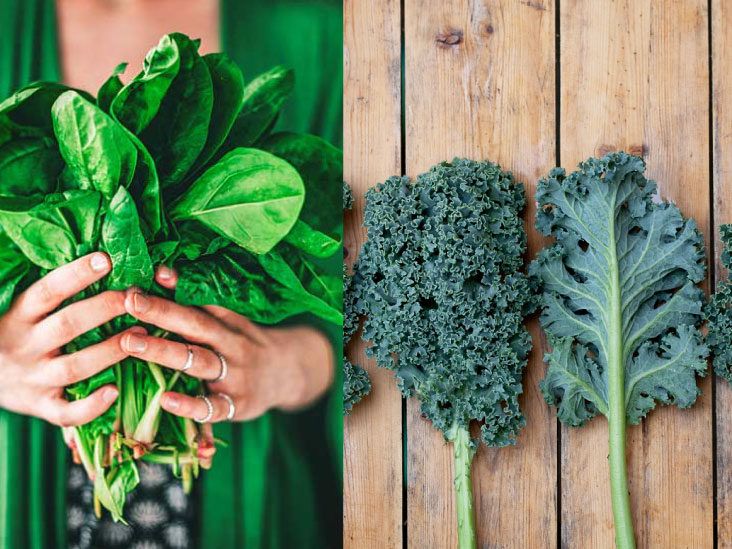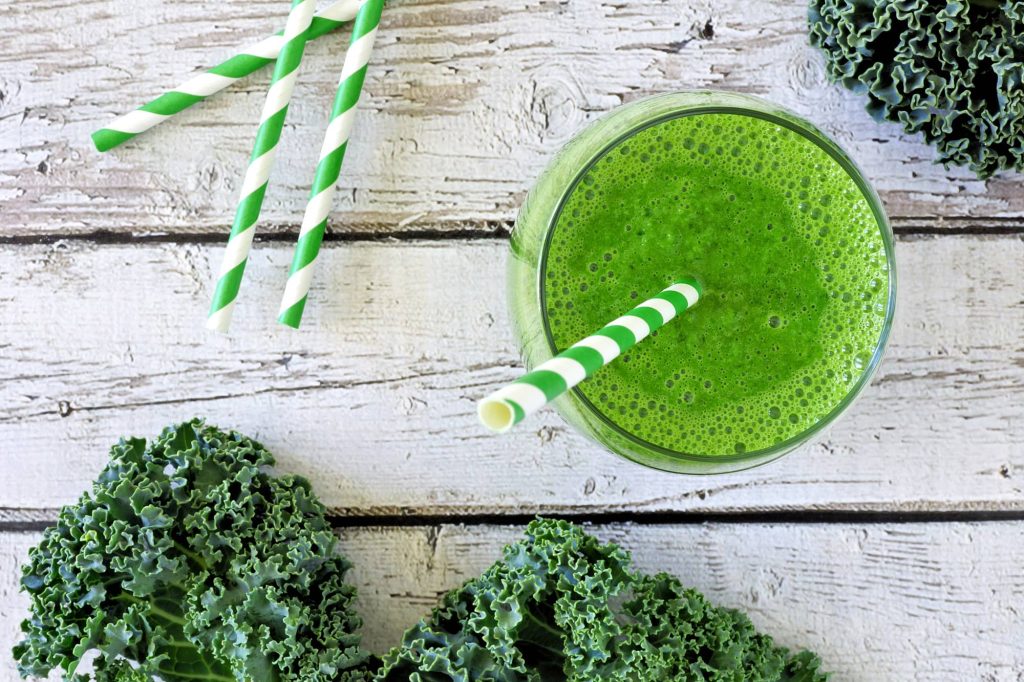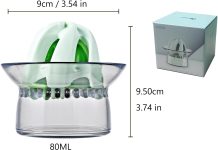Leafy greens like spinach and kale have been hailed as nutritional powerhouses, packed with vitamins, minerals, and antioxidants. But can you really extract the goodness from these vibrant green leaves by juicing them? Many fitness enthusiasts and health-conscious individuals have begun incorporating green juices into their diets, hoping to reap the benefits of these nutrient-dense foods in a more convenient and easily digestible form. In this article, we will explore the feasibility of juicing leafy greens like spinach and kale, the potential health benefits, and some tips for incorporating these juices into your daily routine. So, grab your juicer and let’s find out if leafy greens can indeed be transformed into a tasty and nutritious elixir.
This image is property of www.rebootwithjoe.com.
Review contents
Health Benefits of Juicing Leafy Greens
Juicing leafy greens is an excellent way to boost your overall health and well-being. Leafy greens are packed with essential nutrients, antioxidants, and possess anti-inflammatory properties, making them a valuable addition to any diet. By incorporating leafy greens into your juicing routine, you can enjoy a wealth of health benefits.
High Nutrient Content
Leafy greens, such as spinach, kale, and Swiss chard, are known for their high nutrient content. They are rich in vitamins, minerals, and fiber, which are essential for maintaining good health. When juiced, these nutrients become more readily available for absorption by the body, allowing you to maximize their benefits.
Antioxidant-Rich
One of the remarkable benefits of juicing leafy greens is the high concentration of antioxidants they contain. Antioxidants help to neutralize harmful free radicals in the body, which are known to contribute to the development of chronic diseases. By regularly consuming antioxidant-rich juice made from leafy greens, you can support your body’s defense against oxidative stress and promote overall well-being.
Anti-Inflammatory Properties
Leafy greens also possess powerful anti-inflammatory properties, which can be beneficial for those dealing with inflammation-related conditions such as arthritis, heart disease, and certain types of cancer. Juicing leafy greens allows these anti-inflammatory compounds to be easily absorbed by the body, assisting in reducing inflammation and promoting a healthier, more balanced state.
Choosing the Right Leafy Greens for Juicing
When it comes to juicing leafy greens, it is crucial to choose the right ones that provide the most nutritional benefits and taste great. Here are some popular leafy greens to consider for your juicing recipes:
Spinach
Spinach is a versatile leafy green that is mild in flavor and pairs well with a variety of fruits and vegetables. It is an excellent source of vitamins A, C, and K, as well as folate and iron. Including spinach in your juice recipes can help boost your immune system and promote healthy blood clotting.
Kale
Kale is often hailed as a superfood due to its impressive nutritional profile. It is loaded with vitamins A, C, and K, as well as antioxidants and fiber. Kale has a slightly bitter taste, but when combined with sweeter fruits or balanced out with citrus flavors, it can create a delicious and nutritious juice.
Swiss Chard
Swiss chard is a leafy green with a unique and vibrant appearance. It is packed with vitamins A, C, and K, as well as magnesium and potassium. Swiss chard has a mild and slightly earthy taste, making it a great addition to any juice blend.
Collard Greens
Collard greens are a staple in southern cooking, known for their robust and slightly bitter flavor. They are rich in vitamins A, C, and K, as well as calcium and fiber. Incorporating collard greens into your juice recipes can add a distinct flavor profile and boost your nutrient intake.
Beet Greens
Beet greens are often overlooked but are highly nutritious. They are an excellent source of vitamins A and K, as well as iron and fiber. When juiced, beet greens add a slight earthy taste and vibrant color to your juice blends.
Romaine Lettuce
Romaine lettuce is a popular leafy green that is crisp and refreshing. It is a good source of vitamins A, C, and K, as well as folate and potassium. Romaine lettuce is mild in flavor and can be added to any juice recipe for its nutritional benefits.
Preparing Leafy Greens for Juicing
Properly preparing leafy greens for juicing is essential to ensure the best taste and texture in your juice. Here are some steps to follow:
Washing and Cleaning
Before juicing, it is crucial to wash and clean your leafy greens thoroughly. This helps remove any dirt, bacteria, or pesticides that may be present. Fill a large bowl with water and gently swirl the greens around, allowing any debris to sink to the bottom. Rinse the greens under running water, ensuring all dirt is removed. Pat them dry or use a salad spinner to remove excess water before juicing.
Removing Stems and Tough Parts
Depending on the leafy green, you may need to remove the tough stems or fibrous parts before juicing. For spinach and Swiss chard, it is typically unnecessary to remove the stems. However, kale and collard greens benefit from having the tough stalks removed. Simply hold the stem at the base and strip the leaf away, discarding the stem. This step ensures a smoother texture in your juice.
Using Leafy Greens in Juice Recipes
Leafy greens can be the star ingredient or a supportive element in a variety of juice recipes. Here are a few ideas to inspire your juicing adventures:
Green Juice
A classic green juice typically consists of a combination of leafy greens, cucumber, celery, and lemon. Feel free to experiment and add in other fruits or vegetables to suit your taste preferences. Green juice is an excellent way to start your day, providing a powerful nutrient boost to energize your body.
Detox Juice
If you’re looking to cleanse your system, a detox juice with leafy greens can be a great option. Combine spinach, kale, cucumber, ginger, and lemon for a refreshing and detoxifying beverage. This juice can help flush out toxins from the body and support your natural detoxification processes.
Energy-Boosting Juice
To give yourself a natural energy boost, try creating a juice blend using leafy greens, such as kale or Swiss chard, along with fruits like pineapple, green apple, and mint. The combination of vitamins, minerals, and natural sugars in this juice will provide sustained energy without the crash associated with caffeine or processed sugars.
This image is property of www.medicalmedium.com.
Juicing Techniques for Leafy Greens
Getting the most out of your leafy greens during the juicing process requires some specific techniques. Here are a few tips to help you achieve optimal results:
Blending vs. Juicing
While blending leafy greens in a high-speed blender can create a thicker, smoothie-like consistency, juicing extracts the liquid and nutrients, leaving behind the fiber. Both methods have their benefits, so choose the technique that aligns with your preferences and desired outcome.
Adding Liquid and Fiber
Leafy greens, particularly those with a high fiber content like kale or collard greens, can be challenging to juice on their own due to their lower water content. To ensure a smoother juicing process, add a small amount of liquid, such as filtered water or coconut water, to help break down the greens. Additionally, to retain some fiber, you can mix the extracted juice with the pulp or use a juicer that retains more fiber in the final product.
Combining with Other Fruits and Vegetables
To enhance the flavor and nutritional profile of your leafy green juice, don’t hesitate to experiment with different fruits and vegetables. Apples, pears, cucumber, ginger, and lemon are popular choices that pair well with most leafy greens. The sweetness and acidity of these ingredients can help balance out any bitterness or earthiness in the greens.
Tips for Optimal Juicing Results
To ensure you get the most out of your leafy green juicing experience, consider the following tips:
Use a High-Quality Juicer
Investing in a high-quality juicer can make a significant difference in the overall juicing process. Look for a juicer specifically designed to handle leafy greens, as they often have special features like slow-speed settings and extra strainers to extract the maximum amount of juice.
Alternate Leafy Greens with Harder Produce
To optimize juicing efficiency and extraction, alternate leafy greens with harder produce like cucumbers, apples, or carrots. This technique helps push the greens through the juicer, ensuring a more thorough extraction of juice and nutrients.
Drink Your Juice Fresh
For the best taste and nutritional content, it is recommended to drink your leafy green juice immediately after juicing. Exposure to air and light can cause oxidation, which can degrade the nutrients and lead to a less appealing taste. If you need to store your juice, use an airtight container and refrigerate for no more than 24-48 hours.
This image is property of www.becomingbroccoli.com.
Overcoming Common Challenges in Juicing Leafy Greens
Juicing leafy greens can sometimes present a few challenges, but with the right techniques, they can be easily overcome. Here are some common challenges and how to tackle them:
Bitterness
Certain leafy greens, such as kale or collard greens, can have a slightly bitter taste. To counterbalance this bitterness, include sweeter fruits like apples, pears, or pineapple in your juice recipes. Additionally, adding ginger, lemon, or lime can help mask the bitter flavor and add a refreshing zing.
Oxidation
As previously mentioned, oxidation can occur when the juice is exposed to air, causing a decline in nutrient content and a less appetizing taste. To minimize oxidation, consume your juice as soon as possible after juicing, and store it in an airtight container in the refrigerator if necessary.
Foam
When juicing leafy greens, especially in high-speed juicers, foam can form on the surface of the juice. While harmless, foam can affect the taste and texture of your juice. To reduce foam, try skimming it off the top with a spoon or add a small amount of lemon juice, which can help stabilize the foam and prevent excessive frothiness.
Potential Side Effects of Juicing Leafy Greens
While juicing leafy greens offers numerous health benefits, it is essential to be aware of potential side effects that may arise, particularly if consumed in excess. Here are some side effects to consider:
Digestive Issues
Some individuals may experience digestive issues, such as bloating, gas, or diarrhea, when consuming large quantities of raw leafy green juice. This can be due to the high fiber content in leafy greens. To prevent or minimize digestive discomfort, start with smaller amounts of juice and gradually increase your intake over time. Additionally, be sure to drink plenty of water throughout the day to support proper digestion.
Kidney Stones
Leafy greens, such as spinach, contain naturally occurring compounds called oxalates, which can contribute to the formation of kidney stones in susceptible individuals. If you have a history of kidney stones or are at a higher risk, it is advisable to moderate your intake of oxalate-rich foods, including leafy green juices. However, it is important to note that for the majority of individuals, the oxalate content in leafy greens is not a cause for concern.
Blood Thinning
Certain leafy greens, such as spinach and kale, contain vitamin K, which is essential for blood clotting. If you are taking blood-thinning medications, it is important to consult with your healthcare provider before significantly increasing your intake of vitamin K-rich foods, including leafy green juices, as it may interfere with the medication’s effectiveness.
This image is property of media.post.rvohealth.io.
Including Leafy Greens in a Balanced Diet
While juicing leafy greens can be a fantastic way to reap their many benefits, it is crucial to incorporate them into a well-rounded, balanced diet. Here are a few additional ways to include leafy greens in your meals:
Other Ways to Incorporate Leafy Greens
Besides juicing, there are several other ways to incorporate leafy greens into your diet. You can add them to salads, sandwiches, stir-fries, soups, or smoothies. Leafy greens can also be sautéed or steamed as a nutrient-rich side dish.
Proper Serving Sizes
When juicing leafy greens, it is important to keep portion sizes in mind. While leafy greens are incredibly nutritious, they are also low in calories. Aim to include a variety of leafy greens in your juice recipes and balance them with other fruits and vegetables to ensure a well-rounded nutritional intake.
Conclusion
Juicing leafy greens like spinach and kale provides a plethora of health benefits and is a delicious way to boost your nutrient intake. By choosing the right leafy greens, preparing them properly, and using the right juicing techniques, you can enjoy refreshing and nutritious juices that support overall well-being. Remember to consume your leafy green juice fresh, overcome common challenges, and be mindful of potential side effects. Incorporating leafy greens into your diet, whether through juicing or other culinary methods, is a fantastic way to promote a balanced and healthy lifestyle. So grab your favorite leafy greens, fire up your juicer, and enjoy the incredible benefits of juicing leafy greens!
This image is property of cleangreensimple.com.


